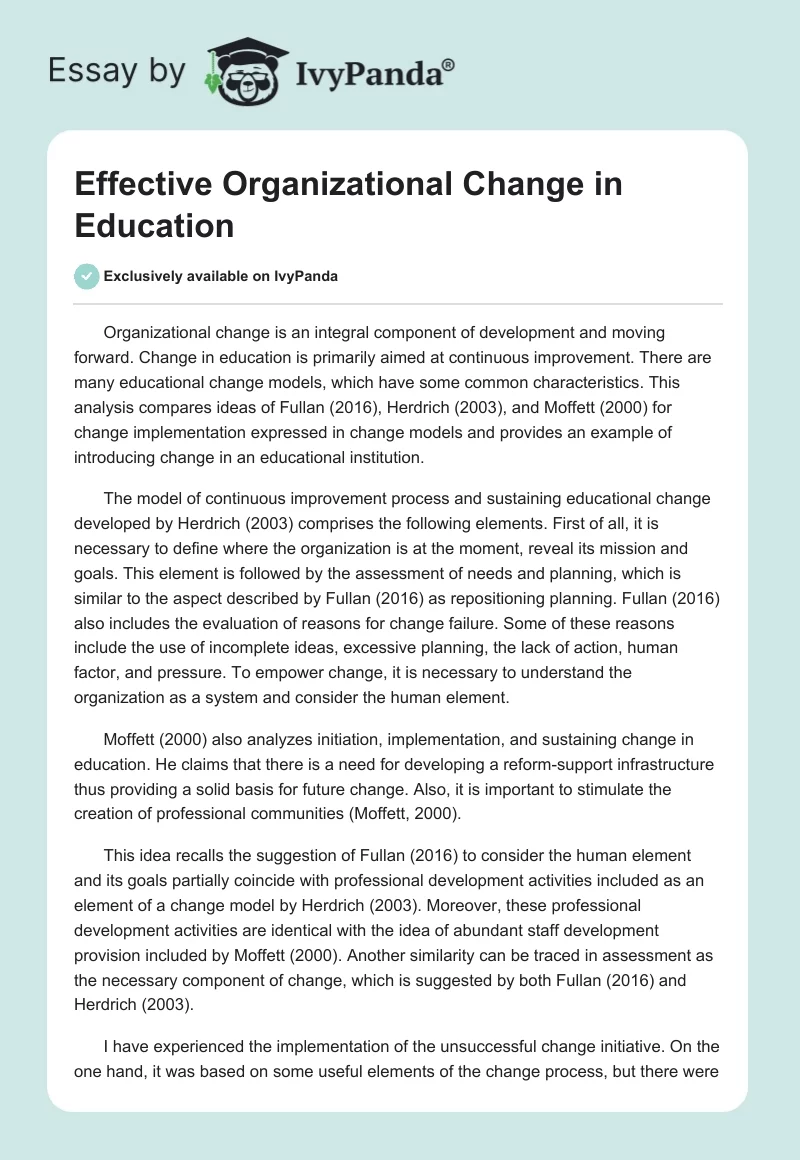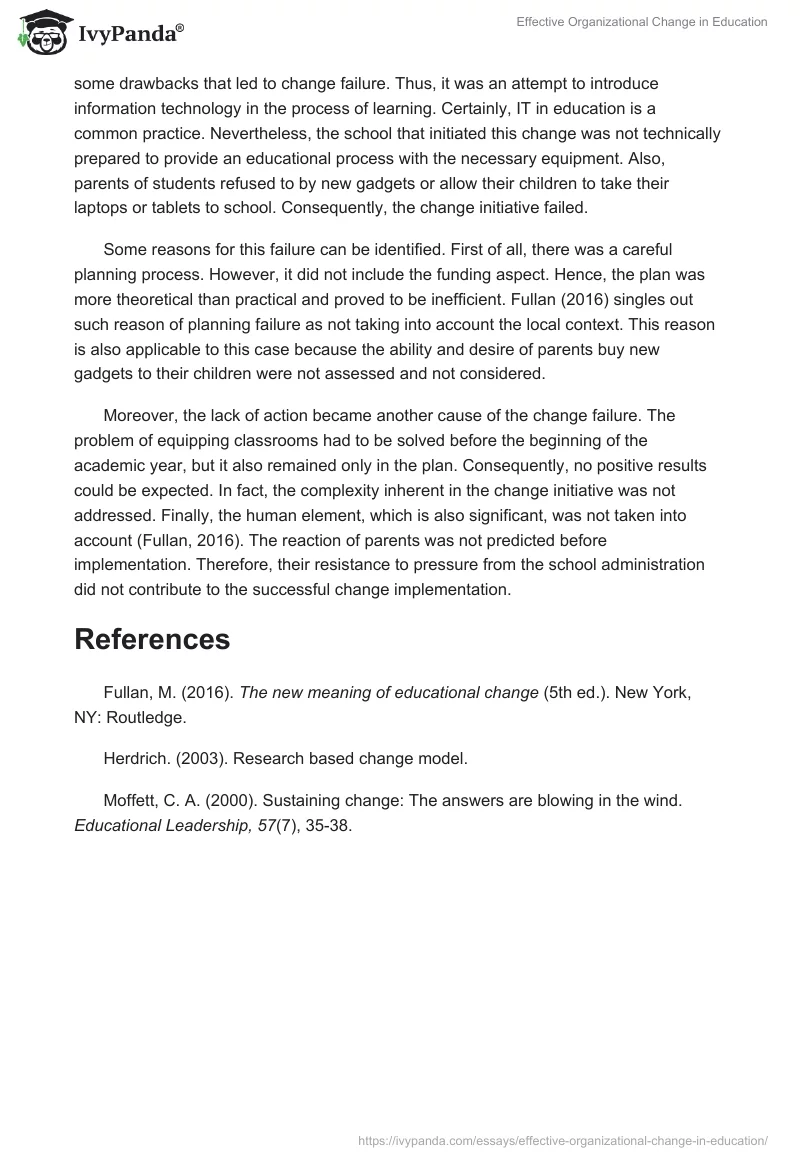Organizational change is an integral component of development and moving forward. Change in education is primarily aimed at continuous improvement. There are many educational change models, which have some common characteristics. This analysis compares ideas of Fullan (2016), Herdrich (2003), and Moffett (2000) for change implementation expressed in change models and provides an example of introducing change in an educational institution.
The model of continuous improvement process and sustaining educational change developed by Herdrich (2003) comprises the following elements. First of all, it is necessary to define where the organization is at the moment, reveal its mission and goals. This element is followed by the assessment of needs and planning, which is similar to the aspect described by Fullan (2016) as repositioning planning. Fullan (2016) also includes the evaluation of reasons for change failure. Some of these reasons include the use of incomplete ideas, excessive planning, the lack of action, human factor, and pressure. To empower change, it is necessary to understand the organization as a system and consider the human element.
Moffett (2000) also analyzes initiation, implementation, and sustaining change in education. He claims that there is a need for developing a reform-support infrastructure thus providing a solid basis for future change. Also, it is important to stimulate the creation of professional communities (Moffett, 2000).
This idea recalls the suggestion of Fullan (2016) to consider the human element and its goals partially coincide with professional development activities included as an element of a change model by Herdrich (2003). Moreover, these professional development activities are identical with the idea of abundant staff development provision included by Moffett (2000). Another similarity can be traced in assessment as the necessary component of change, which is suggested by both Fullan (2016) and Herdrich (2003).
I have experienced the implementation of the unsuccessful change initiative. On the one hand, it was based on some useful elements of the change process, but there were some drawbacks that led to change failure. Thus, it was an attempt to introduce information technology in the process of learning. Certainly, IT in education is a common practice. Nevertheless, the school that initiated this change was not technically prepared to provide an educational process with the necessary equipment. Also, parents of students refused to by new gadgets or allow their children to take their laptops or tablets to school. Consequently, the change initiative failed.
Some reasons for this failure can be identified. First of all, there was a careful planning process. However, it did not include the funding aspect. Hence, the plan was more theoretical than practical and proved to be inefficient. Fullan (2016) singles out such reason of planning failure as not taking into account the local context. This reason is also applicable to this case because the ability and desire of parents buy new gadgets to their children were not assessed and not considered.
Moreover, the lack of action became another cause of the change failure. The problem of equipping classrooms had to be solved before the beginning of the academic year, but it also remained only in the plan. Consequently, no positive results could be expected. In fact, the complexity inherent in the change initiative was not addressed. Finally, the human element, which is also significant, was not taken into account (Fullan, 2016). The reaction of parents was not predicted before implementation. Therefore, their resistance to pressure from the school administration did not contribute to the successful change implementation.
References
Fullan, M. (2016). The new meaning of educational change (5th ed.). New York, NY: Routledge.
Herdrich. (2003). Research based change model.
Moffett, C. A. (2000). Sustaining change: The answers are blowing in the wind. Educational Leadership, 57(7), 35-38.


